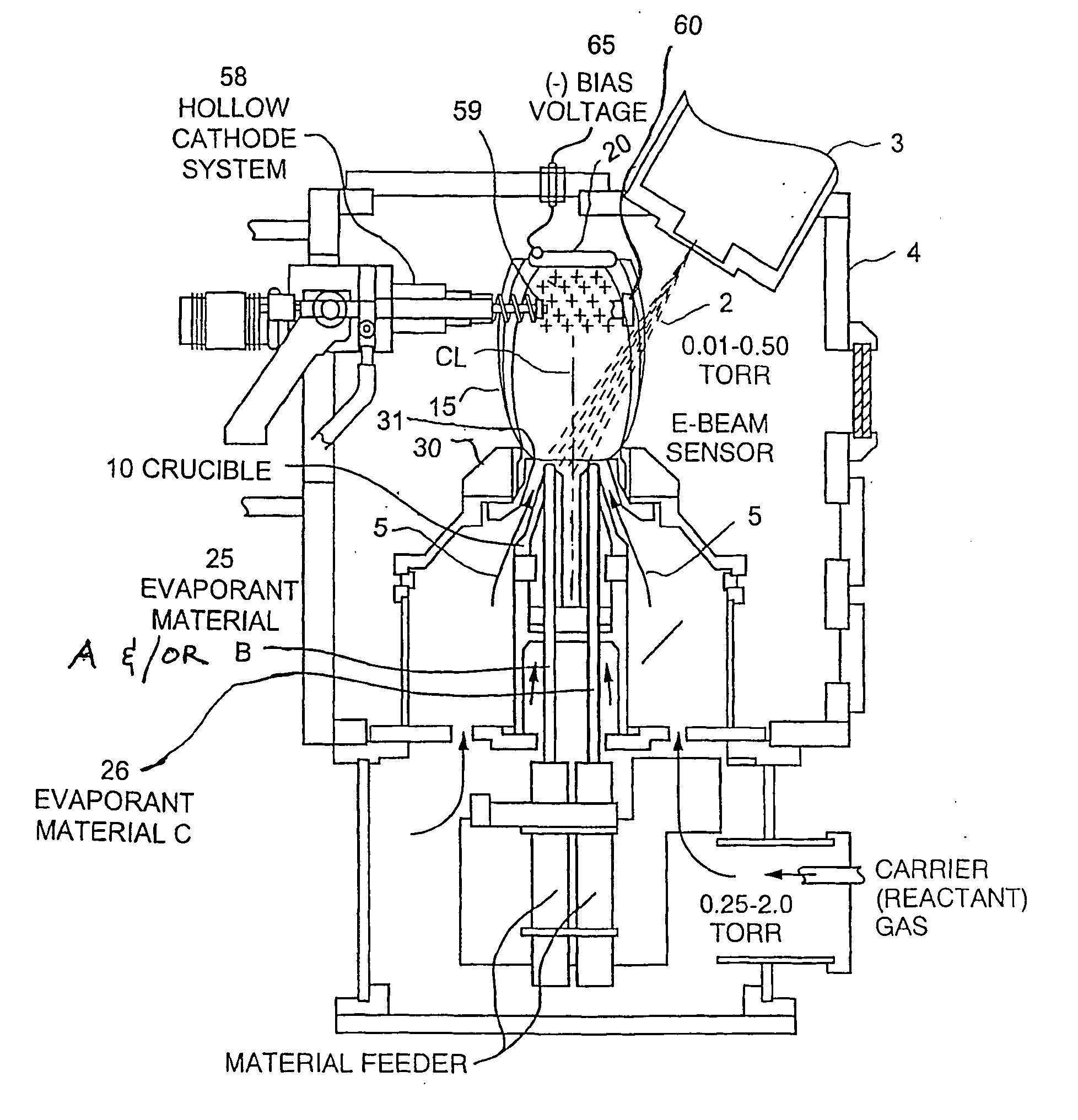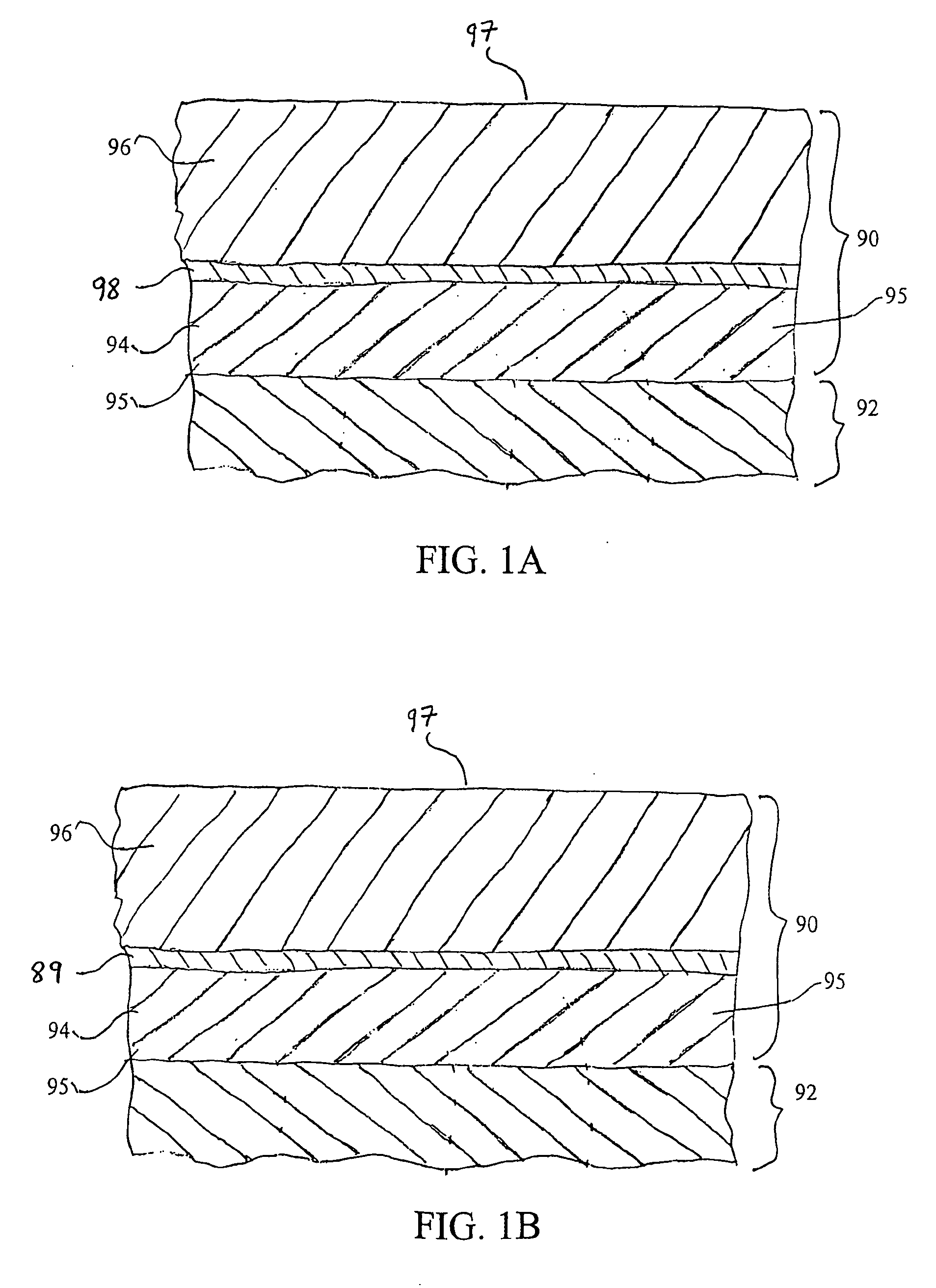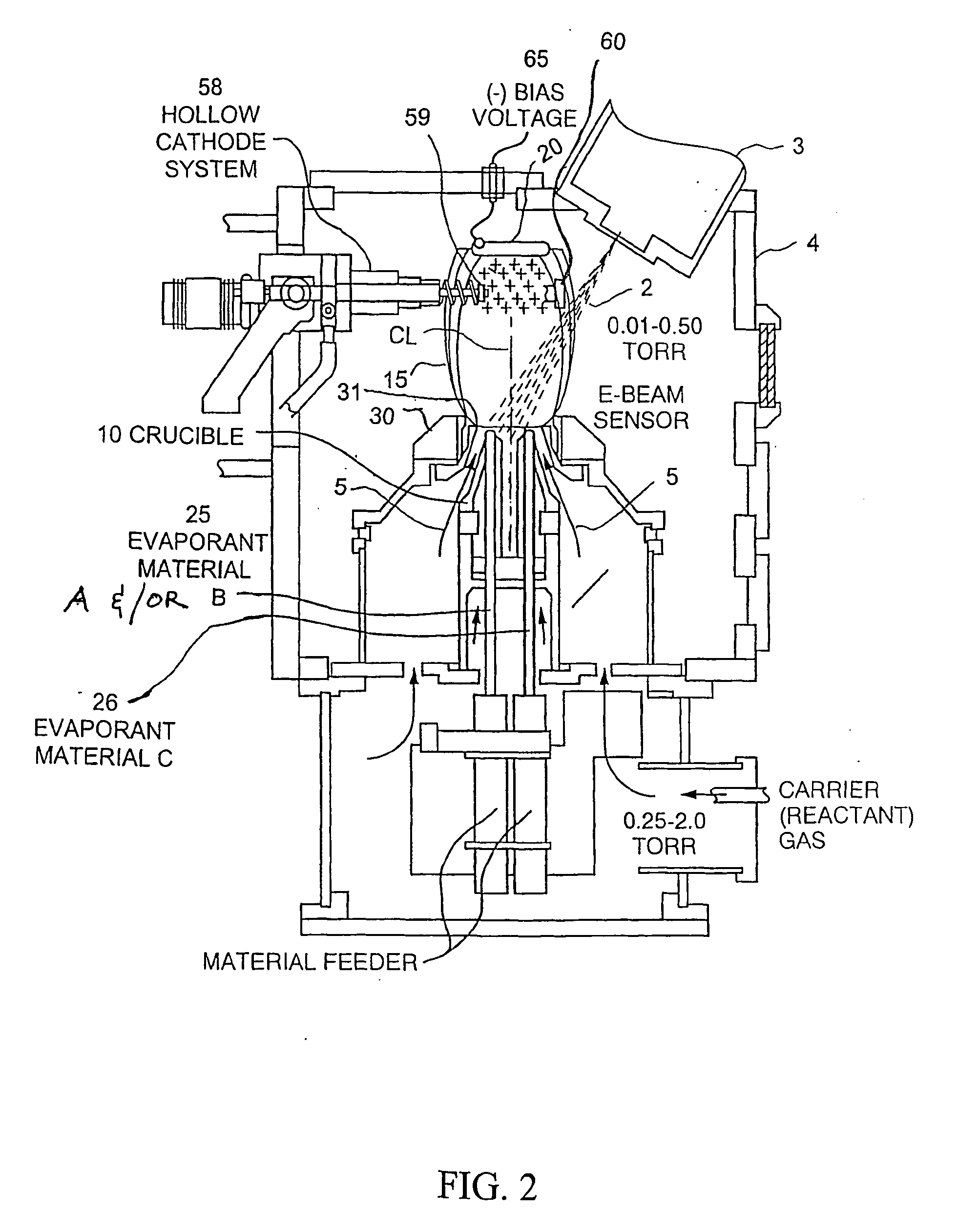Bond coat for a thermal barrier coating system and related method thereof
a thermal barrier coating and bonding technology, applied in the direction of superimposed coating process, vacuum evaporation coating, coatings, etc., can solve the problems of unsatisfactory rocket engine application and overheating of the bond coating, and achieve efficient bonding, limited oxidation or non-oxidation conditions, and high temperature capability
- Summary
- Abstract
- Description
- Claims
- Application Information
AI Technical Summary
Benefits of technology
Problems solved by technology
Method used
Image
Examples
Embodiment Construction
[0043] The present invention provides, among other things, TBC systems comprising a higher temperature capable bond coat system that is not necessarily based on formation of an alumina thermally grown oxide (TGO). While conventional bond coat compositions that form alumina TGO have lower melting points than required, for the present invention oxidation protection is not necessarily required under reducing conditions. An embodiment of the present invention TBC system is specifically designed for rocket engine and other related applications, however it may be applicable to any application that sees high temperatures and either non-oxidizing or limited oxidizing conditions. Materials for the bond coat layer may include; but not limited thereto iron (Fe), nickel (Ni), Chronium (Cr), Plantinum (Pt), Iridium (Ir), titanium (Ti), zirconium (Zr), niobium (Nb), tantalum (Ta), and tungsten (W) and their alloys. Functionally layering and or grading of these materials is also provided in variou...
PUM
| Property | Measurement | Unit |
|---|---|---|
| Pressure | aaaaa | aaaaa |
| Temperature | aaaaa | aaaaa |
| Distance | aaaaa | aaaaa |
Abstract
Description
Claims
Application Information
 Login to View More
Login to View More - R&D
- Intellectual Property
- Life Sciences
- Materials
- Tech Scout
- Unparalleled Data Quality
- Higher Quality Content
- 60% Fewer Hallucinations
Browse by: Latest US Patents, China's latest patents, Technical Efficacy Thesaurus, Application Domain, Technology Topic, Popular Technical Reports.
© 2025 PatSnap. All rights reserved.Legal|Privacy policy|Modern Slavery Act Transparency Statement|Sitemap|About US| Contact US: help@patsnap.com



